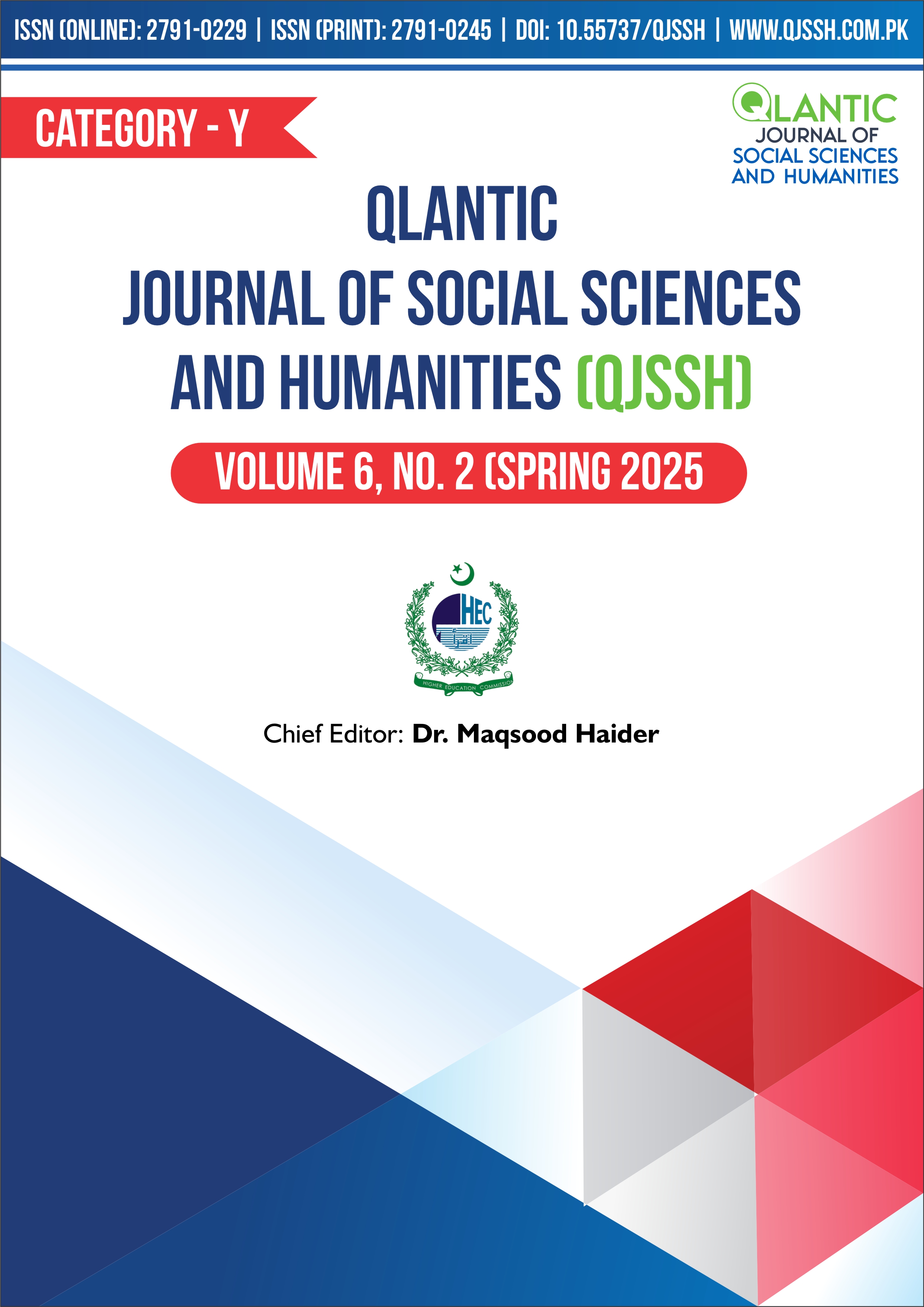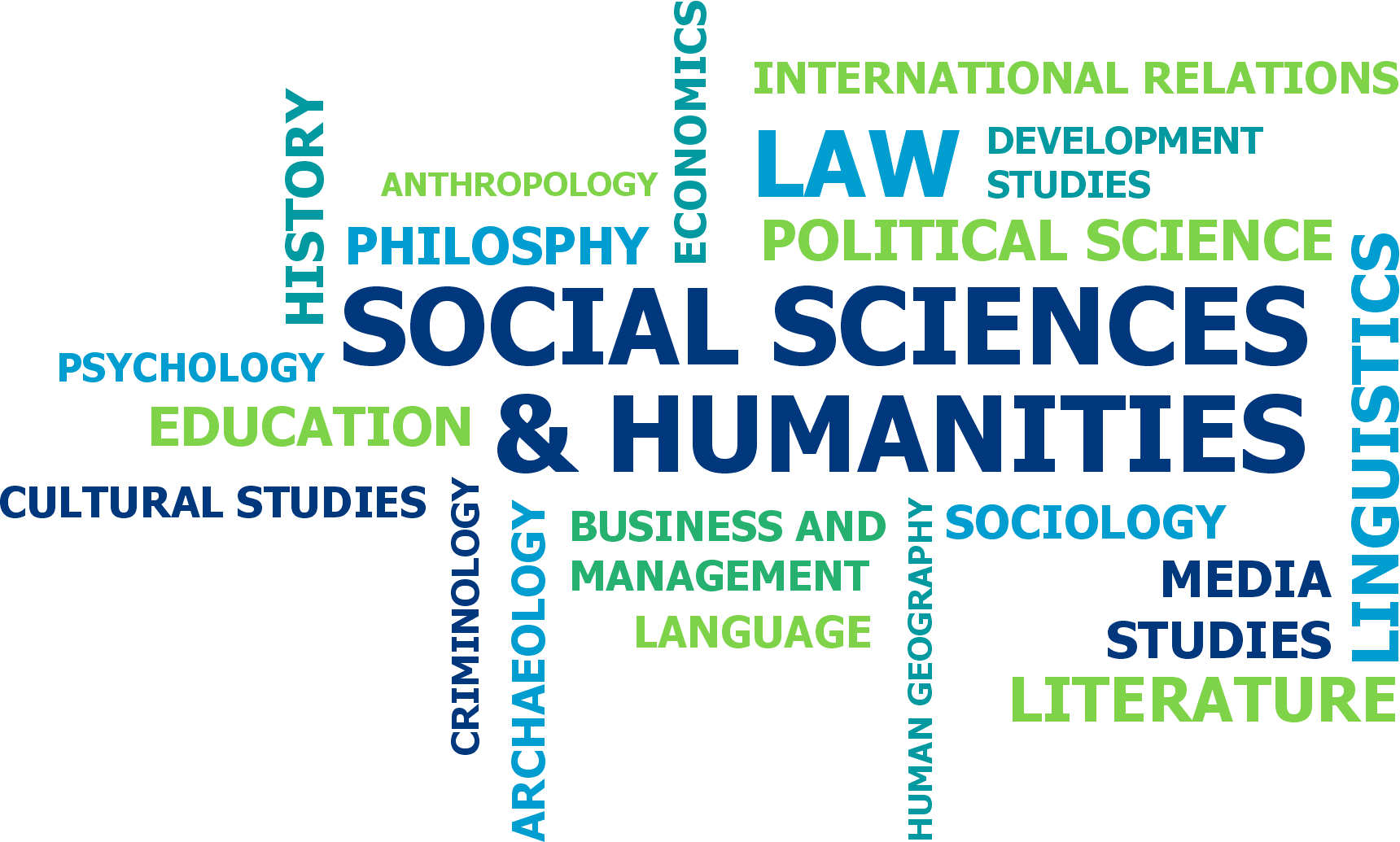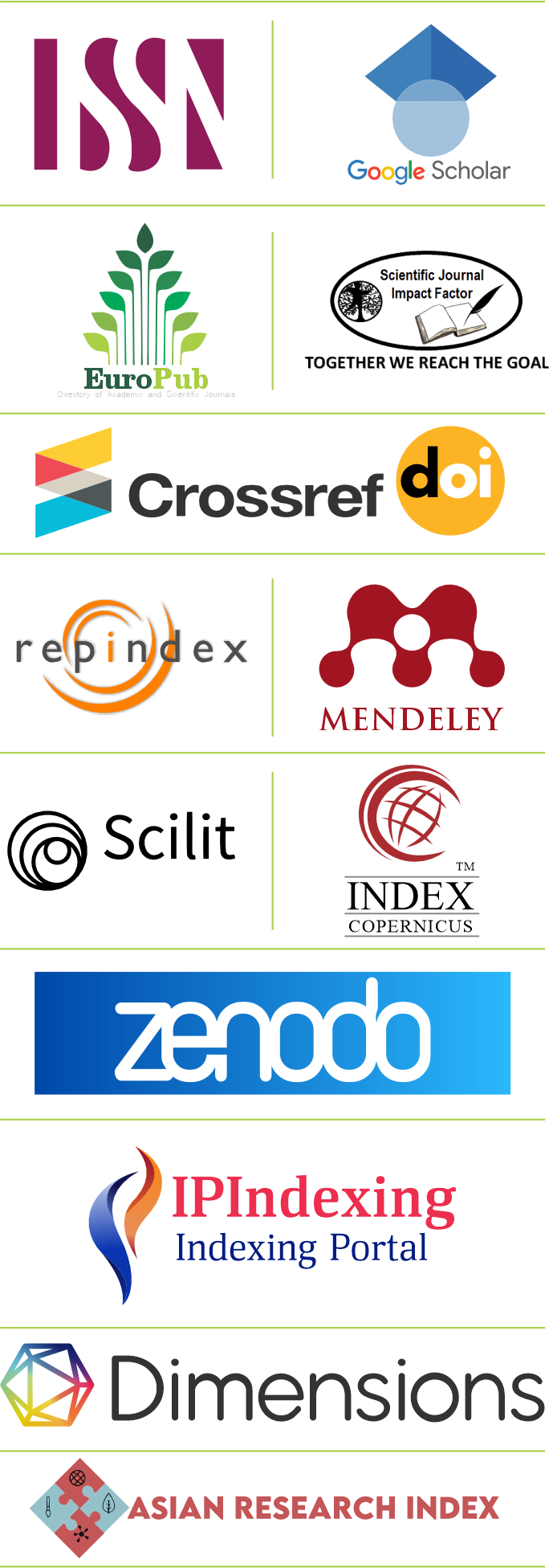Narratives on Digital Frontline: Analyzing Visual Media on Twitter of the Ukraine Conflict 2022
DOI:
https://doi.org/10.55737/qjssh.vi-ii.25332Keywords:
Conflict, MFA, Russia-Ukraine, Digital Communication, Visual FramingAbstract
This research aims to gain insight into the communication methods the Ukrainian Ministry of Foreign Affairs (MFA) used on its official X (formerly known as Twitter) account to handle the conflict between Russia and Ukraine that started in early 2022. The study focuses on the MFA's visual framing strategies throughout this period. The method used for the study is based on qualitative discourse analysis, with tweets collected using skip-interval sampling. Categorization schemes were created from identified frames in the data for further analysis. The study's primary focus was on the frequent visual frames used in the Ukrainian MFA's communication methods. The findings show that the MFA mostly uses two frames in its tweets: the global facet frame, emphasizing gaining international support, and the second conflict frame, highlighting Russia's misdeeds in Ukraine. These findings provide important insights into the existing research on frame analysis.
References
Abbruzzese, J. (2022). Russian disinformation, and propaganda ramp up as conflict in Ukraine grows [E-Newspaper]. NBC NEWS. https://www.nbcnews.com/tech/internet/russian-disinformation-propaganda-ramp-conflict-ukraine-grows-rcna17521
AFP. (2022). Putin Calls for Ukraine Army to Overthrow Zelensky [E-Newspaper]. The Moscow Times. https://www.themoscowtimes.com/2022/02/25/putin-calls-for-ukraine-army-to-overthrow-zelensky-a76598
Banks, A., Calvo, E., Karol, D., & Telhami, S. (2020). PolarizedFeeds: Three experiments on polarization, framing, and social media. The International Journal of Press/Politics, 26(3), 609-634. https://doi.org/10.1177/1940161220940964
Bjola, C., & Manor, I. (2022). The rise of hybrid diplomacy: From digital adaptation to digital adoption. International Affairs, 98(2), 471-491. https://doi.org/10.1093/ia/iiac005
Botes, J. (. (2007). Mediatized conflict: Developments in media and conflict studies. Journal of Peace Research, 44(1), 124-124. https://doi.org/10.1177/002234330704400111
BRAND UKRAINE. (2025). How long does Russia’s aggression against Ukraine really last? [Governament Owned]. Ukraine.Ua. https://war.ukraine.ua/the-histrory-of-russian-aggression-in-ukraine/#year-2014
Bryant, J., & Miron, D. (2004). Theory and research in mass communication. Journal of Communication, 54(4), 662-704. https://doi.org/10.1111/j.1460-2466.2004.tb02650.x
Bywater, M. (2021). The humanitarian alibi: An overview and a redefinition. Journal of International Humanitarian Action, 6(1). https://doi.org/10.1186/s41018-021-00106-7
Castells, M. (2011). The rise of the network society (2. ed. with a new preface, [reprint]). Wiley-Blackwell.
Charushin, V. (2023). Future of the Russia-Ukraine War [E-Newspaper]. Modern Diplomacy. https://moderndiplomacy.eu/2023/06/19/future-of-the-russia-ukraine-war/
Chudzicka-Czupała, A., Hapon, N., Chiang, S., Żywiołek-Szeja, M., Karamushka, L., Lee, C. T., Grabowski, D., Paliga, M., Rosenblat, J. D., Ho, R., McIntyre, R. S., & Chen, Y. (2023). Depression, anxiety and post-traumatic stress during the 2022 Russo-Ukrainian war, a comparison between populations in Poland, Ukraine, and Taiwan. Scientific Reports, 13(1). https://doi.org/10.1038/s41598-023-28729-3
Ciuriak, D. (2022). Social Media Warfare Is Being Invented in Ukraine [Research]. CIGI. https://www.cigionline.org/articles/social-media-warfare-is-being-invented-in-ukraine/
Coleman, R. (2010). Framing the Pictures in Our Heads. Routledge. https://www.researchgate.net/publication/313706944_Framing_the_pictures_in_our_heads_Exploring_the_framing_and_agenda-setting_effects_of_visual_images
Collins, N., & Bekenova, K. (2019). Digital diplomacy: Success at your fingertips. Place Branding and Public Diplomacy, 15(1), 1-11. https://doi.org/10.1057/s41254-017-0087-1
DASTGEER, S., & THAPALIYA, R. (2023). Shugofa DASTGEER Assistant Professor, Texas Christian University. 16(1).
DRI. (2022). Eight Things You Should Know about Social Media in the War on Ukraine [E-Newspaper]. Democracy Reporting International. https://democracy-reporting.org/en/office/ukraine/publications/eight-things-you-should-know-about-social-media-in-the-war-on-ukraine
Duncombe, C. (2017). Twitter and transformative diplomacy: Social media and Iran–US relations. International Affairs, 93(3), 545-562. https://doi.org/10.1093/ia/iix048
Ellyatt, H. (2023). How—And when—Ukraine’s war with Russia could end [E-Newspaper]. CNBC.
https://www.cnbc.com/2023/08/07/when-and-how-will-ukraines-war-with-russia-end.html
Entman, R. M. (1993). Framing: Toward clarification of a fractured paradigm. Journal of Communication, 43(4), 51-58. https://doi.org/10.1111/j.1460-2466.1993.tb01304.x
Fisher, M. (2014). Everything you need to know about the 2014 Ukraine crisis [Portal]. VOX. https://www.vox.com/2014/9/3/18088560/ukraine-everything-you-need-to-know
Gaufman, E. (2015). Memory, media, and securitization: Russian media framing of the Ukrainian crisis. Journal of Soviet and Post-Soviet Politics and Society, 1(1), 141-174. https://elibrary.utb.de/doi/abs/10.24216/JSPPS-2015-1-9783838267265_008
Grabowicz, G. G., Hajda, L., Flier, M. S., & Plokhy, S. (2016). The future of the past: New perspectives on Ukrainian history. Harvard Ukrainian Research Institute.
Gu, J. (2022). Social Media Affects the Way of Communication. BCP Education & Psychology, 7, 290-94.
Harasymiw, B. (2025). Kharkiv Pact [E-Newspaper]. IEU. https://www.encyclopediaofukraine.com/display.asp?linkpath=pages%5CK%5CH%5CKharkivPact.htm
Hemphill, L., Culotta, A., & Heston, M. (2013). Framing in social media: How the US Congress uses Twitter hashtags to frame political issues. SSRN Electronic Journal. https://doi.org/10.2139/ssrn.2317335
Holroyd, M. (2022). Ukraine war: Five of the most viral misinformation posts and false claims since the conflict began [E-Newspaper]. Euro News. https://www.euronews.com/my-europe/2022/08/24/ukraine-war-five-of-the-most-viral-misinformation-posts-and-false-claims-since-the-conflic
Hoskins, A., & O. Loughlin, B. (2013). War and Media. Wiley.
Ittefaq, M. (2019). Digital Diplomacy via Social Networks: A Cross-National Analysis of Governmental Usage of Facebook and Twitter for Digital Engagement. Semantic Scholar, 18(1), 49–69. https://doi.org/10.17477/JCEA.2019.18.1.049
Ivanova, I. (2023). Twitter is now X. Here’s what that means. [E-Newspaper]. CBS NEWS. https://www.cbsnews.com/news/twitter-rebrand-x-name-change-elon-musk-what-it-means/
Jagtap, S., Trollman, H., Trollman, F., Garcia-Garcia, G., Parra-López, C., Duong, L., Martindale, W., Munekata, P. E., Lorenzo, J. M., Hdaifeh, A., Hassoun, A., Salonitis, K., & Afy-Shararah, M. (2022). The Russia-Ukraine conflict: Its implications for the global food supply chains. Foods, 11(14), 2098. https://doi.org/10.3390/foods11142098
Kolmer, C., & Semetko, H. A. (2009). Framing the Iraq War: Perspectives from American, U.K., Czech, German, South African, and Al-Jazeera News. American Behavioral Scientist, 52(5), 643-656. https://doi.org/10.1177/0002764208326513
Landler, N. (2022). Social media acts as both threat and aid in the Russia-Ukraine war. [E-Newspaper]. The Standard. https://standard.asl.org/20001/opinions/social-media-acts-as-both-threat-and-aid-in-the-russia-ukraine-war/
Makhortykh, M., & Sydorova, M. (2017). Social media and visual framing of the conflict in eastern Ukraine. Media, War & Conflict, 10(3), 359-381. https://doi.org/10.1177/1750635217702539
Mankoff, J. (2022). Russia’s War in Ukraine: Identity, History, and Conflict [Research]. Center for Strategic and International Studies. https://www.csis.org/analysis/russias-war-ukraine-identity-history-and-conflict
Manor, I., & Crilley, R. (2018). Visually framing the Gaza war of 2014: The Israel Ministry of Foreign Affairs on Twitter. Media, War & Conflict, 11(4), 369-391. https://doi.org/10.1177/1750635218780564
Mintz, J. (2024). Russian journalism archive aims to protect independent voices from media suppression [E-Newspaper]. VOA (Voice of America). https://www.voanews.com/a/russian-journalism-archive-aims-to-protect-independent-voices-from-media-suppression/7805039.html
Nygren, G., Glowacki, M., Hök, J., Kiria, I., Orlova, D., & Taradai, D. (2016). Journalism in the Crossfire: Media coverage of the war in Ukraine in 2014. Journalism Studies, 19(7), 1059-1078. https://doi.org/10.1080/1461670x.2016.1251332
Oehmer-Pedrazzi, F., Kessler, S. H., Humprecht, E., Sommer, K., & Castro, L. (Eds.). (2023). Standardisierte Inhaltsanalyse in der Kommunikationswissenschaft – Standardized Content Analysis in Communication Research: Ein Handbuch - A Handbook. Springer Fachmedien Wiesbaden. https://doi.org/10.1007/978-3-658-36179-2
PALKO, O. (2017). The gates of Europe: A history of Ukraine. By Serhii Plokhy. Basic books. 2015. xxiv + 395pp. £25.00. History, 102(349), 112-114. https://doi.org/10.1111/1468-229x.12367
Polovyi, M. (2021). Exploitation of the right to freedom of expression for promoting Pro-Russian propaganda in hybrid war. Politeja, 18(2(71)), 171-182. https://doi.org/10.12797/politeja.18.2021.71.09
Posegga, O., & Jungherr, A. (2019). Characterizing political talk on Twitter: A comparison between public agenda, media agendas, and the Twitter agenda with regard to topics and dynamics. Proceedings of the Annual Hawaii International Conference on System Sciences. https://doi.org/10.24251/hicss.2019.312
Powell, T. E., Boomgaarden, H. G., De Swert, K., & De Vreese, C. H. (2015). A clearer picture: The contribution of visuals and text to framing effects. Journal of Communication, 65(6), 997-1017. https://doi.org/10.1111/jcom.12184
Pukallus, S., & Arthur, C. (2024). Combating Hate Speech on Social Media: Applying Targeted Regulation, Developing Civil-Communicative Skills and Utilising Local Evidence-Based Anti-Hate Speech Interventions. Journalism and Media, 5(2), 467–484. https://doi.org/10.3390/journalmedia5020031
Rauhala, E., Lamothe, D., Suliman, A., & Hassan, J. (2022, March 24). Russia could have lost as many as 15,000 troops in Ukraine war, NATO official estimates [E-Newspaper]. The Washington Post. https://www.washingtonpost.com/world/2022/03/24/russia-troops-casualties-nato-ukraine/
Rutten, E., Fedor, J., & Zvereva, V. (2013). Memory, Conflict and New Media Web Wars in Post-Socialist States (1st Edition). Routledge. https://doi.org/10.4324/9780203083635
Saliu, H. (2023). Narratives of Public Diplomacy in the post-Truth Era: The decline of Soft Power. Communication & Society, 209–224. https://doi.org/10.15581/003.36.2.209-224
Scheufele, D. A. (1999). Framing as a Theory of Media Effects. Journal of Communication, 49(1), 103–122. https://doi.org/10.1111/j.1460-2466.1999.tb02784.x
Shah, D. V., Watts, M. D., Domke, D., & Fan, D. P. (2002). News Framing and Cueing of Issue Regimes. Public Opinion Quarterly, 66(3), 339–370. https://doi.org/10.1086/341396
Smart, B., Watt, J., Benedetti, S., Mitchell, L., & Roughan, M. (2022). #IStandWithPutin Versus #IStandWithUkraine: The Interaction of Bots and Humans in Discussion of the Russia/Ukraine War. Lecture Notes in Computer Science, 34–53. https://doi.org/10.1007/978-3-031-19097-1_3
Snowden, C. (2022). Guns, tanks and Twitter: How Russia and Ukraine are using social media as the war drags on [Research]. The Conversation. https://theconversation.com/guns-tanks-and-twitter-how-russia-and-ukraine-are-using-social-media-as-the-war-drags-on-180131
Suciu, P. (2022). Ukraine Uses Social Media To Share Images From The Frontlines While Russia Offers Rallies [E-Newspaper]. Forbes. https://www.forbes.com/sites/petersuciu/2022/10/01/ukraine-uses-social-media-to-share-images-from-the-frontlines-while-russia-offers-rallies/?sh=514346836e2b
Think tank. (2024). Think Tank reports on the invasion of Ukraine 2022—February 2024 [Research]. European Council on Foreign Relations. https://www.consilium.europa.eu/en/documents-publications/library/library-blog/posts/think-tank-reports-on-the-invasion-of-ukraine-2022-february-2024/
Torbakov, I. (2022). Russia’s invasion of Ukraine: “It’s worse than a crime, it’s a mistake” [E-Newspaper]. Eurasianet. https://eurasianet.org/perspectives-russias-invasion-of-ukraine-its-worse-than-a-crime-its-a-mistake
Vladisavljević, N. (2015). Media framing of political conflict: A review of the literature, Working Paper. MeCoDEM. http://eprints.whiterose.ac.uk/117315/
Witte, M. D. (2023). How will the Russia-Ukraine war end? [Research]. StanfordReport. https://news.stanford.edu/2023/02/17/will-russia-ukraine-war-end/
Yuhas, A. (2022). Thousands of Civilian Deaths and 6.6 Million Refugees: Calculating the Costs of War [E-Newspaper]. The New York Times. https://www.nytimes.com/2022/08/24/world/europe/russia-ukraine-war-toll.html
Downloads
Published
Issue
Section
License
Copyright (c) 2025 Errum Ahmad, Shazia Hashmat, Sumera Gulzar

This work is licensed under a Creative Commons Attribution-NonCommercial 4.0 International License.





